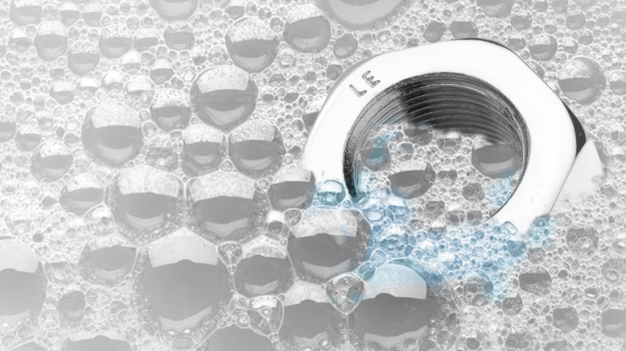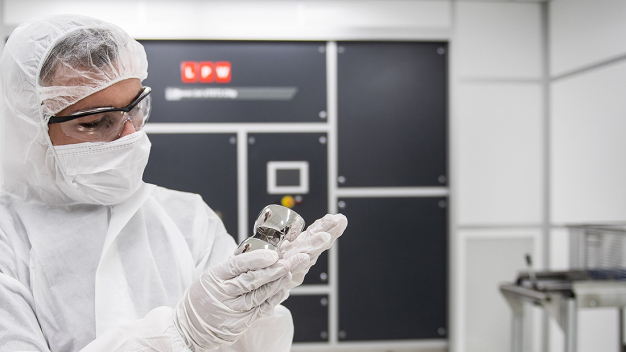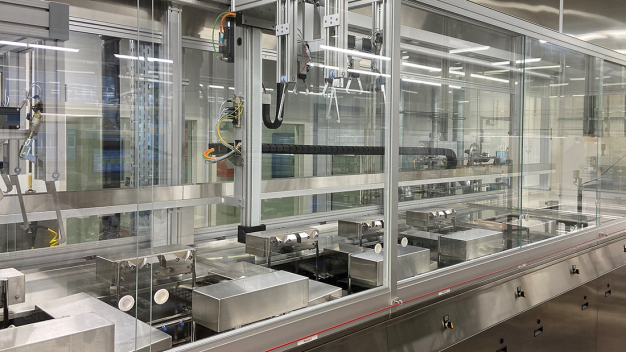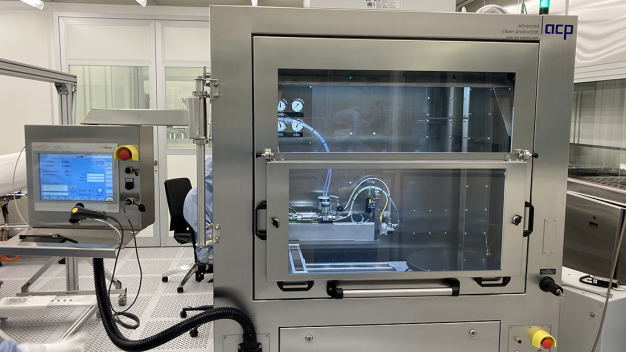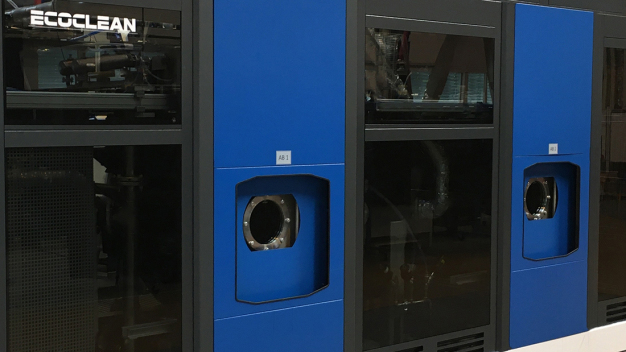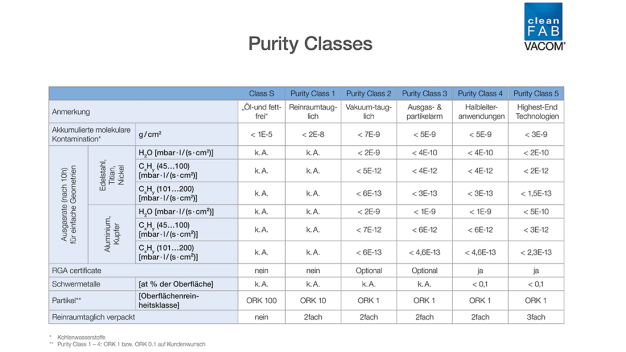- Trade fair
Doris Schulz
High-purity cleaning - what is behind it?
High purity – a term that is increasingly used in component cleaning. Since there is no universally valid definition of which prerequisites and requirements have to be fulfilled, the specifications differ from industry to industry. Basically, the objective is to achieve a very high level of component cleanliness – focusing not only on the actual cleaning solution, but also on the entire process chain and the ambient conditions.
The enormously amplified and continually rising demands in many industries on the performance and reliability of components and parts also have an impact on parts cleaning. The term “high-purity cleaning” is increasingly used – often as a synonym for ultra-fine and precision cleaning – in industrial sectors such as the semiconductor supply industry, electronics manufacturing, electric mobility, the optical and optoelectronic industry, sensor technology, photonics, thin-film technology, vacuum, laser and analytical technology, aerospace as well as medical and pharmaceutical technology. The cleanliness requirements vary depending on the product, area of application and company concerned. The spectrum of materials from which the components to be cleaned are made also varies greatly. It includes, for example, metallic materials as well as plastics, high-performance ceramics and glass materials.
Different components, industries and requirements
The terms ultra-fine, precision and high purity cleaning are closely related because in all cases, extremely high levels of particulate cleanliness, in some cases down to the nanometre range, and extremely stringent specifications with regard to residual film contamination have to be fulfilled. And yet there are differences. For example, high purity is often applied in connection with the semiconductor supply industry, including the manufacture of components for EUV lithography, as well as in high vacuum technology (XHV, UHV and UCV). In addition to particulate and filmic-organic as well as inorganic contaminants, hydrogen-induced outgassing (HIO) substances or elements must be taken into account here. This means the component material or the processing and cleaning media are not allowed to contain these so-called prohibited substances – because even the smallest amounts remaining on the components can lead to cross-contamination in the vacuum or limit the vacuum pressure. This would mean that the prerequisites for the flawless production of, for example, semiconductors and microchips as well as high-tech sensor and analysis systems would no longer be met. This requirement does not usually apply in precision and ultra-fine cleaning.
The specifications for particulate cleanliness to be met during cleaning are given by specifying the corresponding surface cleanliness class (SCC). The filmic-chemical, organic and inorganic surface cleanliness is usually defined by individual specifications or works standards. In addition, outgassing rates are evaluated via mass spectrometers, where appropriate. These specifications are usually not generally available.
With the entire production process in focus
These demanding cleanliness requirements cannot be met by a cleaning system alone; the focus here is much more on the entire production chain, cleanliness-compliant parts handling and the ambient conditions than is the case in classic cleaning tasks. One aspect of this lies in the upstream machining processes, which must support the cleanliness goal of high-purity, precision or ultra-fine cleaning. This is not the case in machining in which, for example, components of the machining medium are worked into the surface in such a way that they cannot be cleaned off at all or to a sufficient extent.
Appropriately designed system technology
Both chamber and ultrasonic multi-bath immersion systems operated with liquid media with adapted process technology and drying are used, as well as dry cleaning processes such as CO2 snow jet technology, plasma cleaning and vacuum bakeout systems. When it comes to selecting the appropriate cleaning technology, the essential criteria are the cleanliness to be achieved, the contamination to be removed, and the material and geometry of the component. On this basis, it is possible to determine which and how many process steps, and with which technology, are required. The optimum solution may also consist of a combination of different methods. Appropriate solutions are available for the frequently required monitoring and control of process parameters.
Regardless of which cleaning technology is used, the equipment must be designed to achieve the high level of cleanliness and to avoid re-contamination and cross-contamination. This includes, for example, selecting the materials and the plant components, as well as processing. Welds, corners and edges where even minimal amounts of dirt can collect are counterproductive.
Pay attention to the medium
Compared to classic cleaning in which a lot of oil, emulsion and chips often have to be removed, in ultra-fine, precision and high-purity cleaning there are often only minimal residual amounts. Depending on the contamination and cleanliness requirements, there could be a solvent, in which case it is usually a conventional modified alcohol. The situation is different with aqueous cleaners. These media are specially formulated to remove the last remaining contaminants from the surface while not applying new ones. For this, the cleaner must be much easier to rinse off. Overall, rinsing has a much higher priority here than in conventional cleaning with water-based media. Accordingly, the systems have more rinsing stages, and much more care is taken not to carry rinsing medium from one tank to the next.
The water quality used also differs. Appropriately treated water is used, adapted to the task. Reverse osmosis (RO), fully demineralized (FD) and ultrapure water (UPW) are used.
No recontamination from the environment
Another essential aspect is the environment in which high-purity cleaned components are handled. The parts are cleaned or dispensed in a clean room, depending on the cleanliness specification. If a clean room is required, the clean room class is based on the surface cleanliness class to be achieved. In order to save costly clean room space, the cleaning system (equipped with appropriate air filter systems) can be placed in a clean area and the parts can be output through an airlock into the clean room. It goes without saying that appropriately trained and equipped staff are also needed here.
Especially when starting to produce parts with very high demands on cleanliness, it can make sense to outsource the cleaning to an experienced and appropriately equipped service provider.
parts2clean – leading international trade fair for industrial parts and surface cleaning
What factors play a role in high purity, precision and ultra-fine cleaning? What has to be considered for systems and media for these types of cleaning? Which requirements have to be considered, and in which high-tech industries? Answers to these and many other questions concerning industrial parts cleaning are provided by parts2clean. The leading international trade fair for industrial parts and surface cleaning will be held at the Stuttgart Exhibition Center in Germany from 26 – 28 September 2023. Comprehensive information will be available here about cleaning systems, alternative cleaning technologies, cleaning media, clean room technology, quality assurance and testing procedures, cleaning and transport containers, disposal and reprocessing of process media, handling and automation, service, consulting, research and technical literature. The three-day technical forum also provides a wealth of know-how on various cleaning topics. www.parts2clean.de.
Deutsche Messe AG
30521 Hannover
Germany





